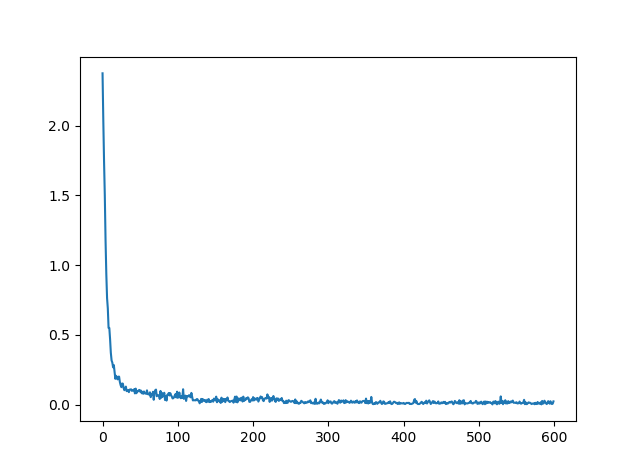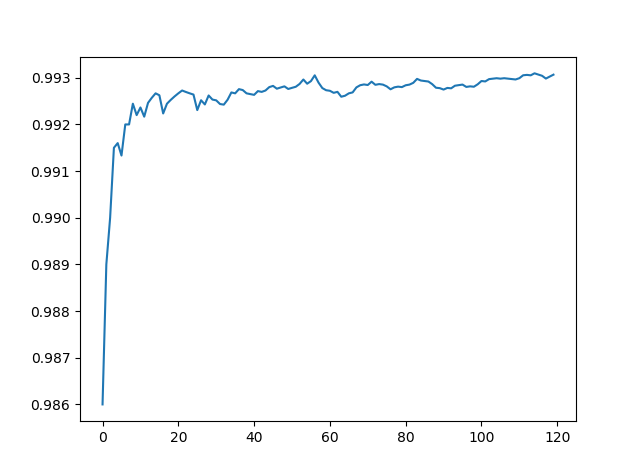EDITORIAL:
I white Kenichi, just beginning to learn the depth of learning, his first experiment conclude, read a lot of Daniel's blog, in the following programs also taken a lot of big cattle blog. In the beginning of entry to the study, direct download programming data set, but then you might need to manually build data sets. So, if you reference a number of blog, try to manually constructed from the data set - to build Resnet34 network - a whole process of validation - training. Will own experiment are reported below. This article focuses on building their own data sets and neural networks to build part
I Caishuxueqian, just getting started, there are flaws in the wrong place implore you criticism.
Chapter One:
Mnist first need to build their own data set, of course, can download from the Internet. Here, for a bit because I want to try to construct their own data set, man of few words said, directly attached to the code
. 1 # ! / Usr / bin / the env Python 3.6 2 # _ * _ Coding: UTF-_ * _. 8 . 3 # @time: 2019/11/7 9:10 . 4 # @author: White Control Engineering . 5 # @FileName: Mnist produce their own data sets .py . 6 . 7 # @Software: PyCharm . 8 Import Torch . 9 Import torchvision 10 from skimage Import IO . 11 # Import OS 12 is mnist_train = torchvision.datasets.MNIST ( ' ./make_mnistdata ' , Train = True, downloads = True) #First download data set, and data is divided into a training set and data set 13 is mnist_test = torchvision.datasets.MNIST ( ' ./make_mnistdata ' , Train = False, downloads = True) 14 Print ( ' testset -: ' , len (mnist_test)) 15 # txt_path = "G: /Mnist_Recognition/mnist_label.txt" 16 # IF Not os.path.exists (txt_path): . 17 # os.makdirs (txt_path) 18 is F = Open ( " ./mnist_test.txt " , ' W ' ) # generated .txt file under the specified path . 19 for I, (IMG, label) inthe enumerate (mnist_test): 20 is img_path = " ./mnist_test/ " + STR (I) + " .jpg " 21 is io.imsave (img_path, IMG) # picture image data to specify the presence .jpg format path 22 is img_paths = img_path STR + (I) + " .jpg " 23 is f.write (img_path + ' ' + STR (label) + ' \ n- ' ) # path are combined into a string tag presence .txt file 24 f.close () # close the file
Note that you should run before the new code in the root directory of a mnist_train folder used to store the training set of images, the new mnist_test folder used to store test set of pictures, run this code and then generates a mnist_test.txt mnist_train.txt file for storing each character string, the string composed by the path of each image corresponding to the label, so as to what to do with, see below. Posted about the results of running the above code
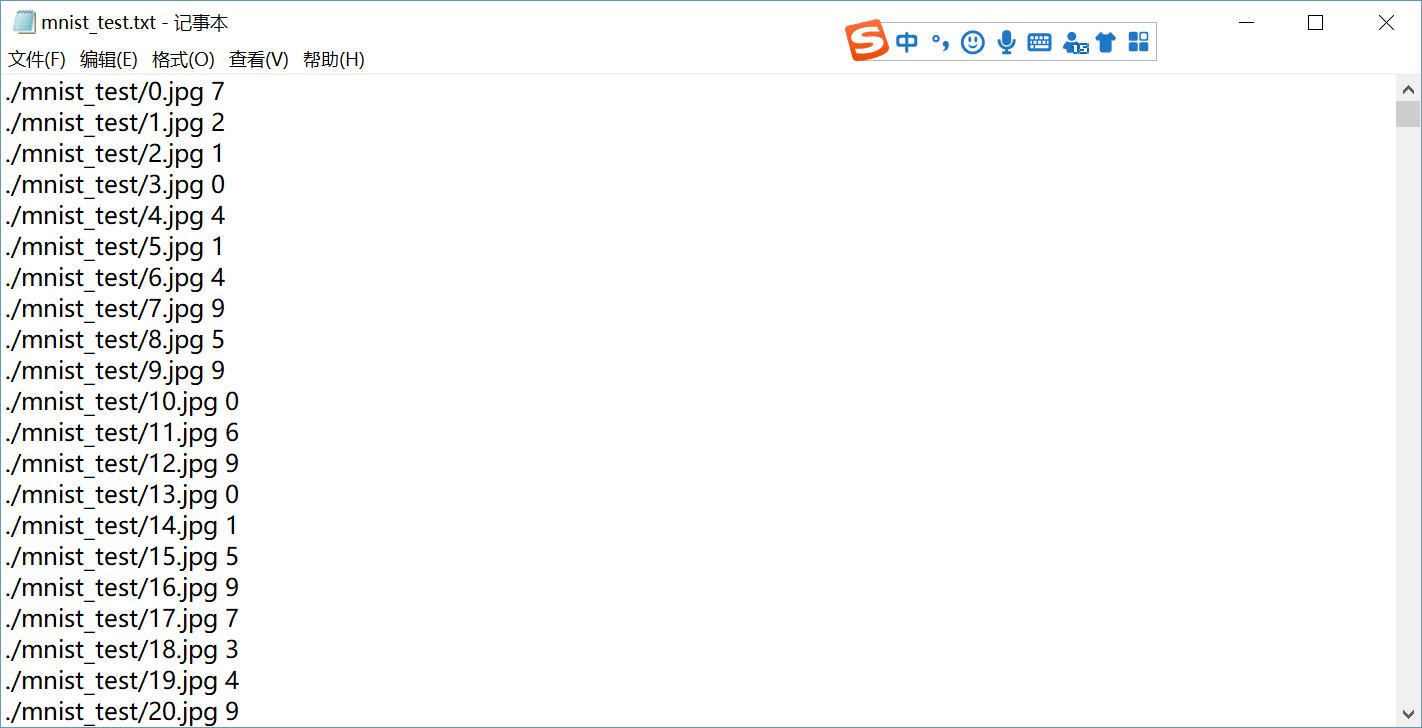
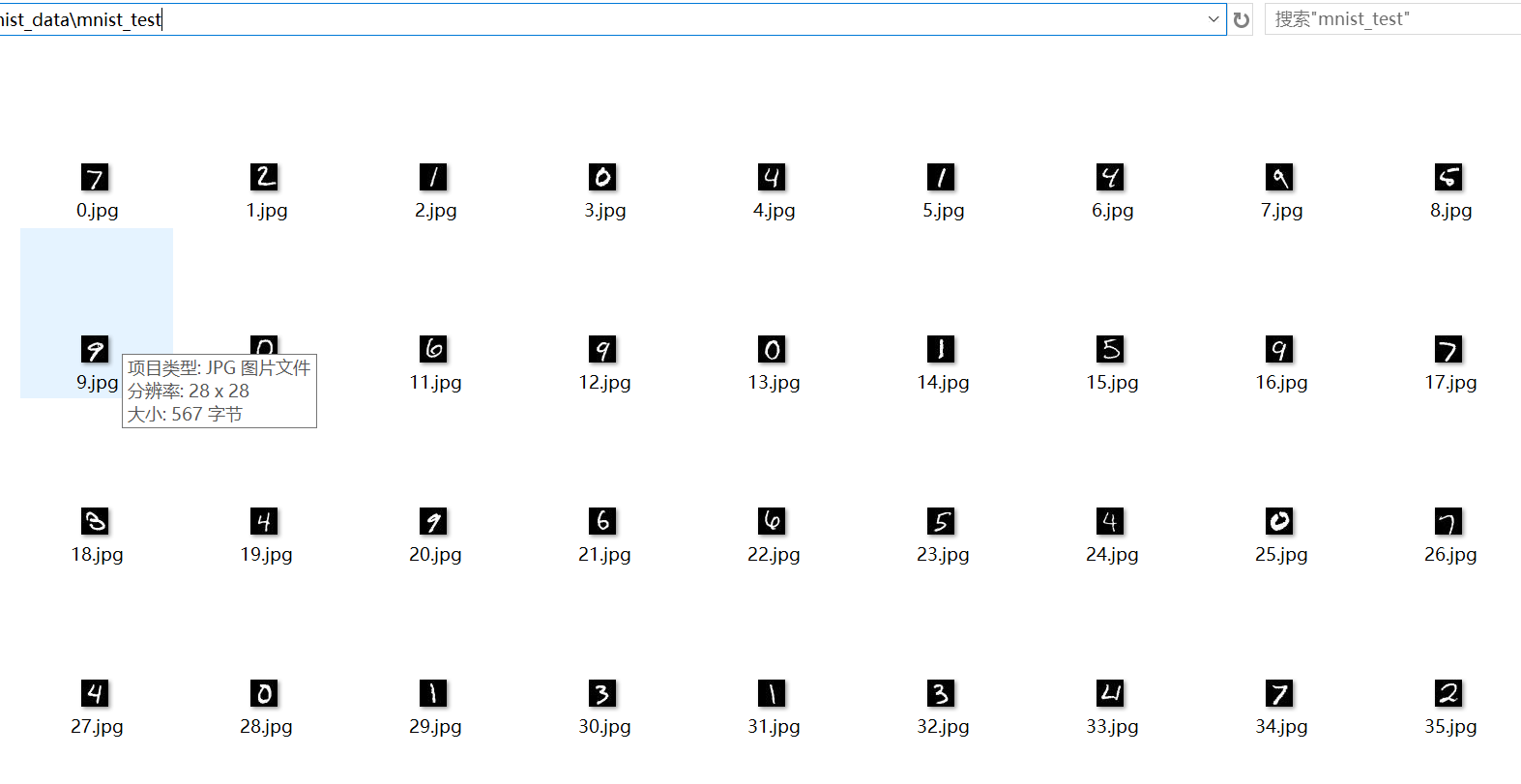
Chapter two:
The following will be used .txt file generated in the previous chapter, the first on the code
1 #!/usr/bin/env python 3.6 2 #_*_coding:utf-8 _*_ 3 #@Time :2019/11/7 11:38 4 #@Author :控制工程小白 5 #@FileName: My_dataset.py 6 7 #@Software: PyCharm 8 from PIL import Image 9 import torch 10 from torch.utils import data 11 import torchvision.transforms as transforms 12 from torch.utils.data import DataLoader 13 importAS PLT matplotlib.pyplot 14 class myDataSet (data.Dataset): 15 DEF the __init__ (Self, datatxt, Transform = None, target_transform = None): 16 Super (myDataSet, Self). the __init__ () . 17 FH = Open (datatxt, ' R & lt ' ) # reading the tag file .txt 18 is imgs = [] # temporarily define an empty list . 19 for Line in FH: 20 is line.strip ( ' \ n- ' ) # out end of the string of blanks, tabs 21 words = line.split ()# The name of the tag out of the separation path 22 is imgs.append ((words [0], int (words [. 1]))) # Word [0] indicates image path name, word [1] represents the digital image corresponding to the label 23 is self.imgs = imgs 24 self.transform = Transform 25 self.target_transform = target_transform 26 is # self.loader = Loader 27 DEF the __getitem__ (Self, index): 28 Fn, self.imgs label = [index] # Fn picture represented path 29 IMG Image.open = (Fn) # .convert ( 'RGB'), where the time required to convert RGB image optic network structure set, reads the file path name, i.e. open the picture 30 IF self.transformIS Not None: 31 is IMG = self.transform (IMG) 32 return IMG, label # returns an image tag 33 is DEF the __len__ (Self): 34 is return len (self.imgs)
Construct a class code, for obtaining the data set just created, is thought to read a .txt file just created, the path name where the picture image corresponding to the label separating, and according to the path name of the image obtaining the data set.
third chapter:
Build a neural network, with the development of deep learning, there have been a variety of neural networks, in general, neural networks, the more the better, but too dimensional neural network, it can cause neural network overfitting, so developers developed a residual neural network Resnet, which is faster by a number of residuals, each block containing a residual hop connections, to prevent over-fitting, so as to affect the network can not be deeper while performance overfitting .

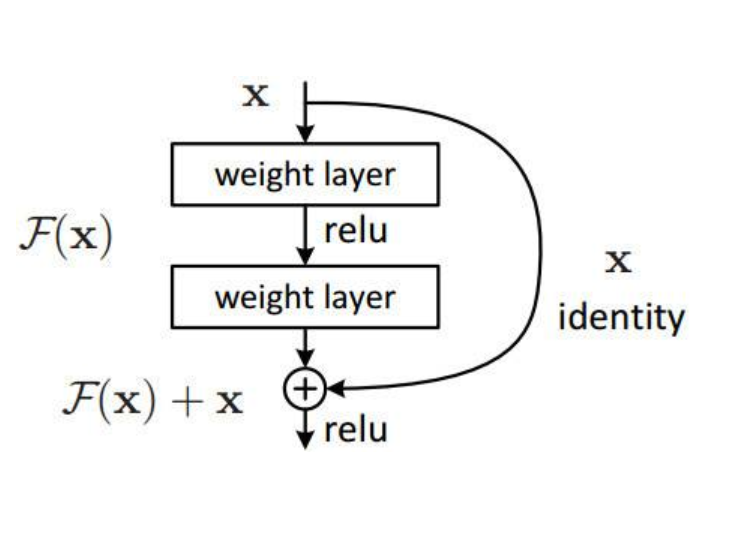
The following code is directly attached Resnet34
#!/usr/bin/env python 3.6 #_*_coding:utf-8 _*_ #@Time :2019/11/7 15:44 #@Author :hujinzhou #@FileName: neural_network4.py #@Software: PyCharm import torch.nn as nn class Reslock(nn.Module): def __init__(self, in_channels, out_channels, stride=1): super(Reslock, self).__init__() self.conv1 = nn.Conv2d(in_channels, out_channels, kernel_size=3, stride=stride, padding=1) self.bn1 = nn.BatchNorm2d(out_channels) self.relu = nn.ReLU(inplace=True) self.conv2 = nn.Conv2d(out_channels, out_channels, kernel_size=3, stride=1, padding=1) self.bn2 = nn.BatchNorm2d(out_channels) if in_channels != out_channels: self.downsample = nn.Sequential( nn.Conv2d(in_channels, out_channels, kernel_size=1, stride=2), nn.BatchNorm2d(out_channels) ) else: self.downsample = None def forward(self, x): identity = x out = self.conv1(x) out = self.bn1(out) out = self.relu(out) out = self.conv2(out) out = self.bn2(out) if self.downsample is not None: identity = self.downsample(x) out += identity out = self.relu(out) return out class ResNet34(nn.Module): def __init__(self, num_classes=10): super(ResNet34, self).__init__() self.first = nn.Sequential( nn.Conv2d(1, 64, 7, 2, 3), nn.BatchNorm2d(64), nn.ReLU(inplace=True), nn.MaxPool2d(3, 1, 1) ) self.layer1 = self.make_layer(64, 64, 3, 1) self.layer2 = self.make_layer(64, 128, 4, 2) self.layer3 = self.make_layer(128, 256, 6, 2) self.layer4 = self.make_layer(256, 512, 3, 2) self.avg_pool = nn.AvgPool2d(2) self.fc = nn.Linear(512, num_classes) def make_layer(self, in_channels, out_channels, block_num, stride): layers = [] layers.append(Reslock(in_channels, out_channels, stride)) for i in range(block_num - 1): layers.append(Reslock(out_channels, out_channels, 1)) return nn.Sequential(*layers) def forward(self, x): x = self.first(x) x = self.layer1(x) x = self.layer2(x) x = self.layer3(x) x = self.layer4(x) x = self.avg_pool(x) # x.size()[0]: batch size x = x.view(x.size()[0], -1) x = self.fc(x) return x
Chapter Four:
Somehow above procedure, the following procedure is very simple, direct examination of the following training and identify it, the training code validation code is very simple, directly attached to the training and recognition accuracy results of FIG herein FIG.
